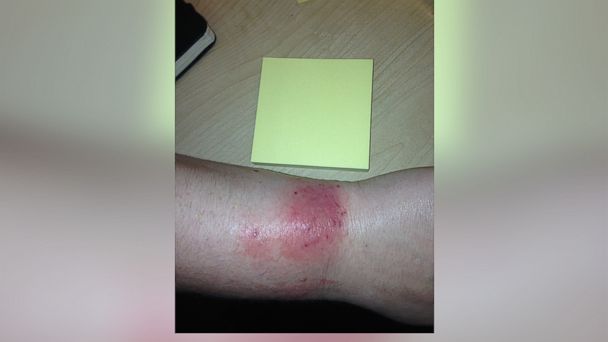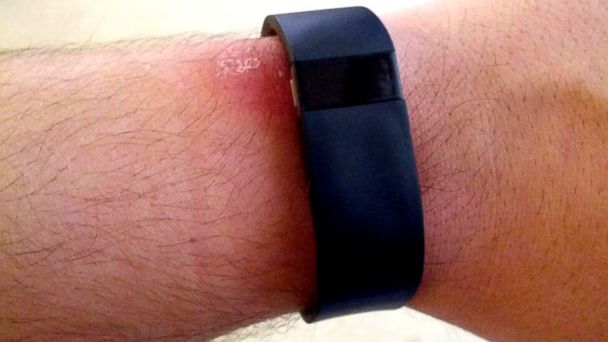Fitbit Does More Than Track Fitness, It Also Leaves a Rash for Some
What's the latest trend in wearable tech? How about blisters and rashes.
Some owners of the Fitbit Force, a gadget users wear like a bracelet and which records their exercise and sleep habits, are complaining that the device is irritating their skin, causing hives, blisters and rashes.
"The newest #fitbit Force burned my arm," tweeted user Doug MacLeod, who included a photo of a red blotch on his wrist.
Another user, Katy Crossen, told ABC News she began wearing hers on Dec. 20 and soon developed a rash.

The Fitbit Force has caused skin irritation for some customers, including Katy Crossen. (Courtesy Katy Crossen)
"The rash was initially very bumpy, blistery and scaly," she said. She tried using over-the-counter drugs for several weeks, she said, before visiting a doctor, who wrote her a prescription for an oral steroid.
"I've finished the oral steroid and the rash is not nearly as painful, but it still looks pretty horrible and I'm concerned about scarring," she said. "The bumps and blisters have subsided but it is still very red and a bit dry."

Kevin Sanders from Des Moines, Iowa, shared these images of the chafing caused by using the Fitbit Force. (Courtesy Kevin Sanders)
Fitbit is one of a growing number of companies offering wearable technology, one of the fastest-growing segments of the consumer electronics market and a top seller at last week's Consumer Electronics Show in Las Vegas.
According to market research group NPD, Fitbit sold 68 percent of the market's fitness trackers last year.
Fitbit did not respond to ABC News' requests for comment. The company, however, released a statement to the website Consumerist, saying:
"We are aware that some of our customers have reported a skin irritation from wearing their Force device. We conduct testing in order to satisfy a variety of internationally accepted standards relating to the safety of the materials in our devices. Fitbit wristbands are made of an elastomer material similar to many sports watches and do not contain latex. The Fitbit Force clasps and casing are made with a surgical-grade stainless steel, which is commonly used in watches, jewelry and other products in contact with the skin."
"As with any jewelry or watch, numerous factors could cause a skin irritation, such as nickel sensitivity (surgical stainless steel is an alloy containing traces of nickel), reactions to bacteria that can accumulate in wristbands, or a sensitivity to the material of the band elastomer," the statement said.